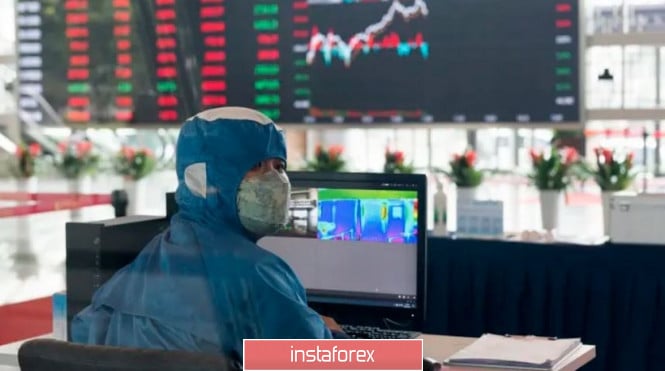Currency pairs of the "major group" are gradually recovering, trying to return to the positions where they were before the strongest rally of the dollar. "Aussie" is no exception – the AUS/USD pair is heading back to the usual price area of the 60s. Dollar fever allowed bears to lower the price to 0.5510. The Australian allowed such weakness in relation to the American namesake only 18 years ago, back in 2002. Strong oversold conditions and an improvement in the fundamental background allowed the pair's buyers to move away from multi-year lows – the pair has remained in positive territory for the past three trading days, although it demonstrates fairly high intraday volatility.

However, yesterday's round clearly remained for the Australian dollar: on Tuesday, AUD/USD rose by more than 150 points, and without the usual price pullback at the end of the trading day. During the Asian session on Wednesday, "Aussie" showed a similar dynamics, having already tested the 60th figure. And apparently, this week, the pair will still gain a foothold in this price area, unless new force majeure circumstances prevent it.
As you know, China is the main trading partner of Australia, so the dynamics of the AUD/USD exchange rate largely depends on events in the Middle Kingdom. On the one hand, the coronavirus inflicted the first and (so far) most severe blow on China – the Chinese were on the front line of the fight against a new scourge. But on the other hand, Chinese stock and credit markets did not suffer as much in March as others this month – partly due to the fact that the country's peak coronavirus incidence rate has already been reached.
At the moment, Italy remains the leader in the number of fatal cases caused by coronavirus infection. In this country, the total number of deaths exceeded 6,000 people. However, the World Health Organization announced yesterday an acceleration in the spread of COVID-19 in the United States. According to their organization data, 85% of infections that occurred over the past day are in the European Union and the United States, and 40% of them occurred in the United States. This suggests that the epicenter of the virus in the world after Italy may become America.
But the news from China is mostly positive – and this factor provides background support for the Australian dollar. It turned out that in China, in total, about 90% of patients with coronavirus recovered. In addition, in the province of Hubei, where, in fact, the pandemic began to spread, one person was identified in the last day, before that, no new cases of infection were recorded for five days. In total, 78 cases were registered in China over the past 24 hours, and 74 of them are those who came to the country from abroad. Responding to the situation, Beijing has already tightened anti-epidemic measures – now all passengers who will arrive in major cities of China will be quarantined and tested for COVID-19.
But in general, China is gradually and cautiously returning to normal life. In particular, the Chinese authorities have significantly eased the quarantine in six regions of the country – primarily in order to launch the operation of factories closed due to the epidemic. Some experts warn that such steps may lead to a new outbreak of coronavirus, but the authorities assure that businesses will work in appropriate conditions – workers will be regularly checked for temperature, they will be required to stay at a distance from each other and wear protective medical equipment (masks, gowns, gloves). Despite fears, tens of millions of workers have already returned to work, and more than 90% of enterprises in most regions of China have resumed production. Operations in non-ferrous metals production have been fully restored, 90% in the pharmaceutical sector and 80% in the steel industry.

The Australian dollar is responding with optimism to all these trends, despite the increase in the incidence of COVID-19 and the tightening of quarantine measures on the green continent. Almost two thousand cases of infection have been detected in Australia, and eight people have died. In the last 24 hours alone, more than 300 new patients with the disease were registered.
However, judging by the dynamics of AUD/USD, "Aussie" is primarily focused on Chinese events and the weakness of the US currency. The US dollar index continues to decline, despite the fact that the US Senate today must pass a large-scale program to help the economy – according to Senator Mitch McConnell, the Congress is "already close to concluding a deal." But this fact is already largely taken into account in current prices, and the fact of a positive vote will only have a short-term impact on the dollar.
Based on the results of the first trading days of this week, we can conclude that the excitement around the US currency has significantly decreased, especially after the Fed provided (as far as it can) much-needed dollar liquidity. This circumstance allows the AUD/USD bulls not only to settle in the 60th figure but also to count on a more serious corrective growth – to the strongest resistance level of 0.6250, which corresponds to the average line of the Bollinger Bands indicator on the daily chart.
The material has been provided by InstaForex Company - www.instaforex.com